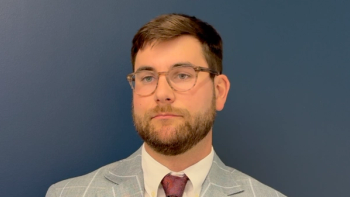
Alternate CTL019 Dosing Schedule Reduced Toxicity in Adult ALL
New research has shown that a higher dose of CTL019 with split dosing was associated with reduced toxicity in adult patients with relapsed, refractory CD19-positive ALL.
New research has shown that the dose and schedule of CART19 infusion-referred to as CTL019-is associated with the severity of cytokine release syndrome (CRS) in adult patients with relapsed, refractory CD19-positive acute lymphoid leukemia (ALL).
Data from the study were presented by Noelle V. Frey, MD, of the University of Pennsylvania Health System, at the 2016 American Society of Clinical Oncology (ASCO) Annual Meeting, held June 3–7 (abstract
“The infusional dose and schedule of CTL019 in adult patients with ALL correlates with both CRS severity and response,” Frey said during her presentation. “A fractionated dosing scheme allows for real time intra-patient dose modification in response to toxicity while being able to still maintain high response rates.”
Survival in adults with relapsed or refractory ALL is extremely poor. Prior studies in adult and pediatric patients with relapsed, refractory disease have shown response rates between 70% and 90% with different investigational CART19 products. When receiving CTL019 infusions, patients first undergo a leukapheresis procedure to collect autologous T cells. Once collected, the cells are expanded and activated ex vivo, and genetically modified with the CAR construct. Prior to reinfusion, the patient receives lymphodepleting chemotherapy to enhance CAR T cell expansion and persistence ex vivo, Frey explained.
“Unfortunately the immune activation that is critical for these high response rates is also responsible for this therapy’s most significant treatment-related toxicity, which is cytokine release syndrome,” Frey said.
In this study, Frey and colleagues analyzed data from 27 adults who received CTL019 on one of two trials to try to see if dose or schedule of the therapy had an effect on CRS severity. The median age of patients was 44. All patients received lymphodepletion followed by a one-time infusion of CTL019 or fractionated infusions over 3 days, with the second and third infusions held if there were early signs of CRS.
Six patients were treated with a high-dose split infusion (5 × 108 CTLO19). These patients all had manageable CRS and all responded to treatment. Another six patients received a single high-dose (5 × 108 CTLO19) infusion. This treatment was deemed unsafe with three patients having early treatment-related deaths that were at least in part contributable to CRS, Frey said.
The researchers then treated nine patients at a lower dose with a single infusion (5 × 107 CTLO19). At this dose, safety was restored but efficacy was severely compromised. Finally, they reverted to the initial high-dose treatment at the split dosing schedule and observed high efficacy rates and acceptable toxicity.
Overall, the study showed a response rate of about 72%. Patients assigned to the high-dose split infusion group had an 86% response rate with manageable CRS. In comparison, the patients treated with the low dose had a response rate of only 33%.
Frey discussed the three treatment-related deaths in greater detail, pointing out that their age and baseline disease burden were representative of the entire patient group. However, all three patients concurrently had culture positive sepsis evident at the time of death, which she said in combination with CRS, contributed to death.
There was no clear dose/neurotoxicity relationship. Most neurotoxicity was grade 1/2 with return to baseline by day 28.
Newsletter
Stay up to date on recent advances in the multidisciplinary approach to cancer.


















































































